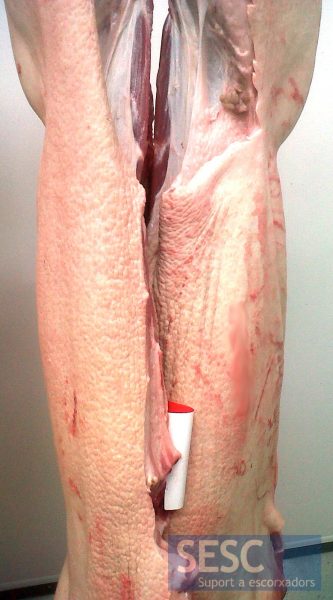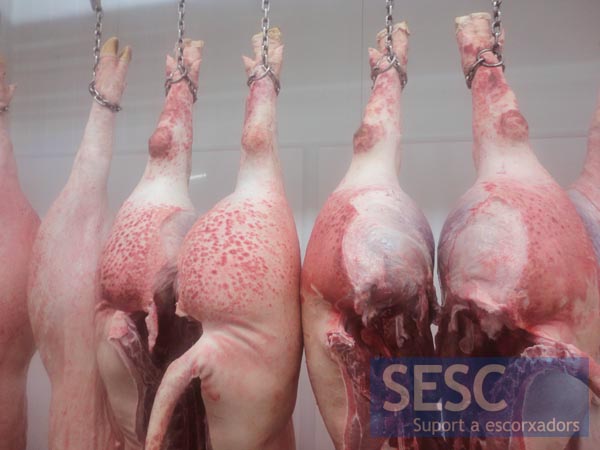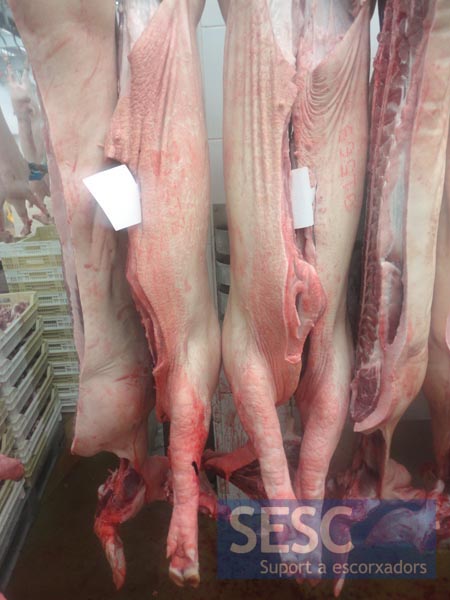Eosinophilic dermatitis in the skin of a pig
In a hybrid breed pig carcass, of about 5 months old, dermal lesions were seen on the skin of the limbs and on the ventral region. The lesions were elevated, not erythematous, plate-shaped, of approximately 0.5 to 1 cm in diameter and confluent.
The distribution of these lesions is suggestive of contact dermatitis to the meat inspectors.
Histopathological examination of the lesion is difficult because of the artifacts caused in the epithelium due to the carcass scalding, however the presence of an intense perivascular inflammatory infiltrate with abundant eosinophilic polymorphonuclear leukocytes was observed.
These findings are relatively unspecific but are compatible with contact dermatitis. The presence of eosinophils may also be associated with ectoparasites either insect bites or other skin parasites. Finally it might also be a hypersensitivity (allergy) but it would not be the case when many animals are affected at once (in the images of the secon case 35 animals from a batch of 152 were affected).
In cases such these ones, blood resorption is usually seen in lymphnodes.





2 comment(s)
Thanks for you comment!
We have asked our dermatologist and yes, is indeed an option, but the distribution affecting the ventral aspect and the limbs was more suggestive of a contact dermatitis to us. Another possibility could also be a parasitic ethiology.
This comment was posted in Linked In:
Also, it could be some feed alergical reaction. Nice pic.